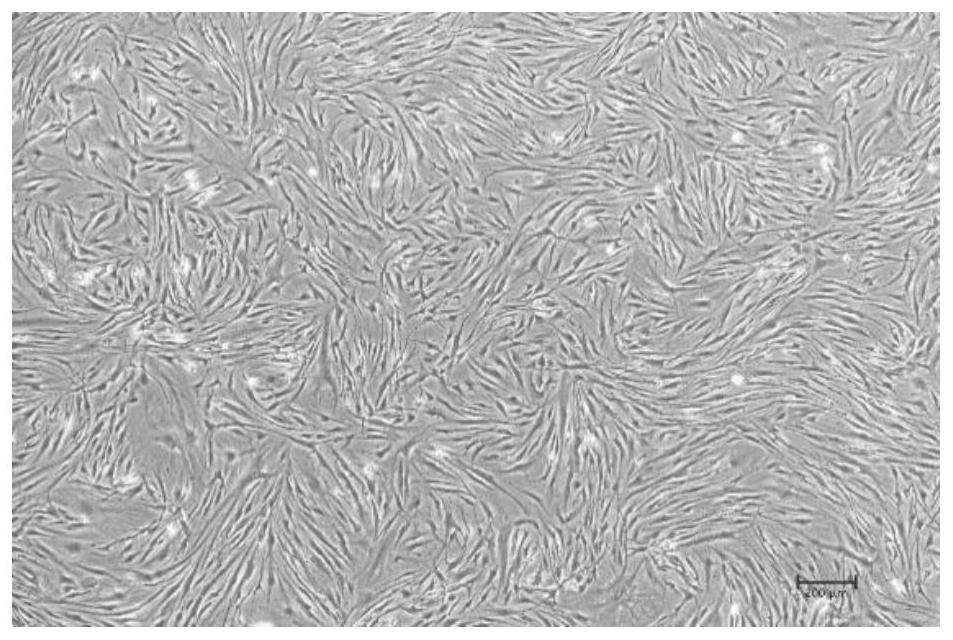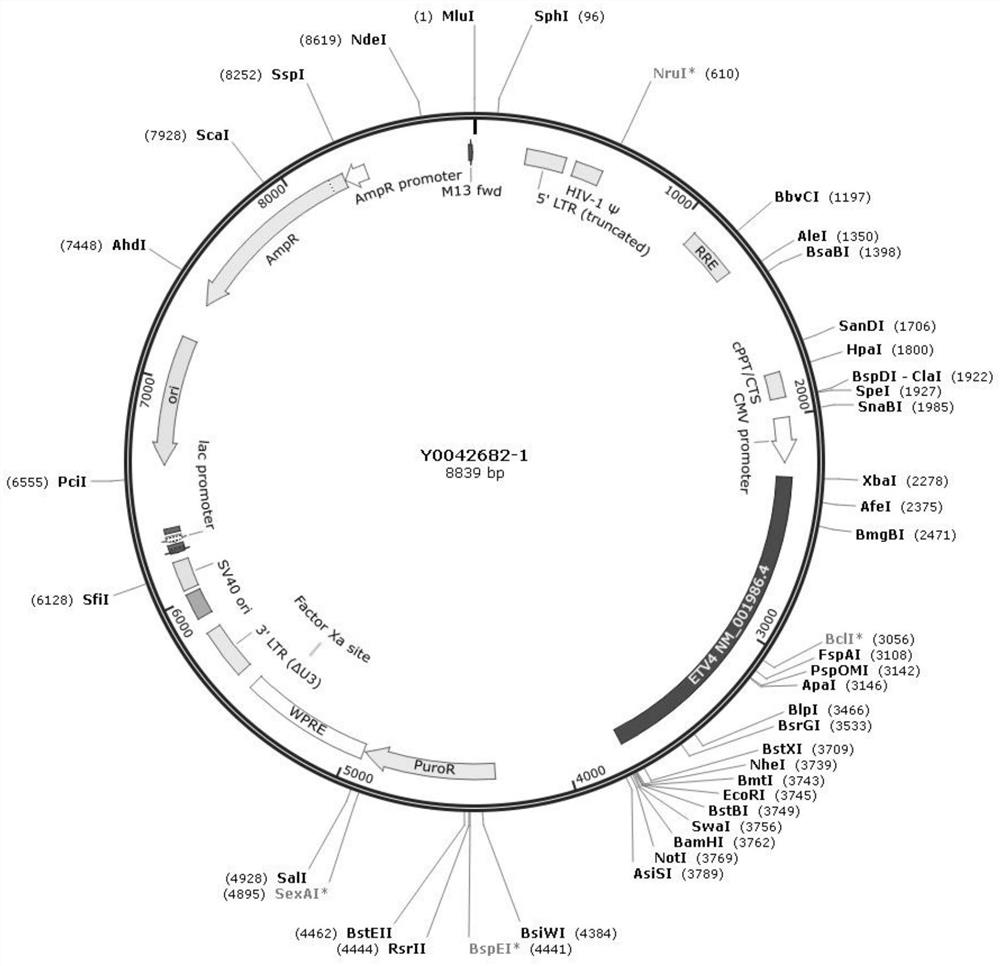Application of ETV4 gene in reprogramming hypertrophic scar fibroblasts
A hypertrophic scar, fibroblast technology, applied in the field of medicine, can solve the problems of no relevant reports, increased invasiveness, decreased tumor invasiveness, etc., and achieves the effect of positive pharmaceutical value and broad social significance.
- Summary
- Abstract
- Description
- Claims
- Application Information
AI Technical Summary
Problems solved by technology
Method used
Image
Examples
Embodiment 1
[0033] Example 1: Plasmid Construction and Cell Culture
[0034] 1.1 Isolation and culture of hypertrophic scar fibroblasts
[0035] Fresh human hypertrophic scar specimens were taken, and the acquisition of all hypertrophic scars was approved by the Ethics Committee of the Plastic Surgery Hospital, and the informed consent of the patients and their families was obtained. After washing twice with sterile PBS, cut into thin strips, put them into 0.25% neutral protease solution, incubate at 37°C for 2 hours, separate the epidermis and dermis, and cut the dermis into pieces. The shredded dermal tissue was added to 10 times the volume of 0.2% type I collagenase solution, placed in a shaker at 37° C. for 2 hours, and the rotation speed was 80 rpm-100 rpm. After the scar tissue is completely digested (just observe that there is no lumpy tissue), filter it with a 70 μm filter, centrifuge at 300 g for 5 min, add 5 mL of DMEM low-glucose medium containing 10% fetal bovine serum to res...
Embodiment 2
[0041] Example 2: Virus infects cells
[0042] 2.1 Lentiviral packaging
[0043] The target gene ETV4 plasmid, packaging plasmid psPAX2 and envelope plasmid pMD2.G were co-transfected into HEK 293T cells with jetPRIME transfection reagent buffer (see Figure 5 ), to obtain high titer virus.
[0044] 2.2 Lentivirus infection
[0045] Infect scar fibroblasts with viruses containing pCDH-ETV4 overexpression plasmid and pCDH empty vector plasmid respectively: take P3 cells of hypertrophic scar fibroblasts, make single-cell suspension, and adjust the density to 1×10 5 / mL was seeded on a 6-well plate. When the cells grow to 70-80%, the multiplicity of infection (MOI) value is 350. Add recombinant lentiviral vector (1.26×10 10 pfu / mL). The calculation method for adding virus volume is: MOI=virus amount (mL)×virus titer (pfu / mL)÷cell number (unit). Gently shake the 6-well plate to fully contact the virus solution with the cells, and replace the fresh medium for 24 hours to con...
Embodiment 3
[0046] Example 3: Expression of fibrosis-related genes in hypertrophic scar fibroblasts
[0047] The control group was HSF infected with PCDH empty vector plasmid (see Figure 7 ), the experimental group was HSF infected with PCDH-ETV4 overexpression plasmid (see Figure 8 ). The gene expression of ETV4 in the overexpression group was significantly increased (see Figure 9 ); after overexpressing ETV4, the mRNA and protein expressions of fibrosis-related genes COL1A1, COL3A1 and ACTA2 were significantly down-regulated, and the expression of MMP1 was significantly up-regulated (see Figure 10 and Figure 11 ).
[0048] The specific implementation process is as follows:
[0049] 3.1 RT-PCR detection of gene expression of ETV4 in cells after lentivirus infection
[0050] (1) Add PBS solution to the hyperplastic HSF of the above-mentioned experimental group and control group to wash 2-3 times, add 1mL Trizol after draining the liquid, let it stand at room temperature for 5mi...
PUM
 Login to View More
Login to View More Abstract
Description
Claims
Application Information
 Login to View More
Login to View More - R&D
- Intellectual Property
- Life Sciences
- Materials
- Tech Scout
- Unparalleled Data Quality
- Higher Quality Content
- 60% Fewer Hallucinations
Browse by: Latest US Patents, China's latest patents, Technical Efficacy Thesaurus, Application Domain, Technology Topic, Popular Technical Reports.
© 2025 PatSnap. All rights reserved.Legal|Privacy policy|Modern Slavery Act Transparency Statement|Sitemap|About US| Contact US: help@patsnap.com



